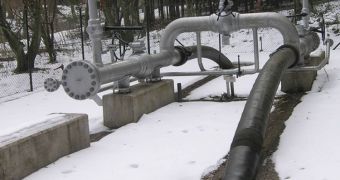Scientists at the Cambridge-based Massachusetts Institute of Technology (MIT) announce the creation of a new method of measuring and monitoring pipeline corrosion. This ability will be essential for avoiding disasters similar to the 2010 PG&E explosion.
At that time, people living in the Bay Area community of San Bruno reported smelling gas in the region. Authorities failed to act, and a large explosion rocked the community a few days later. Eight people were killed, and 40 homes destroyed.
The blast came from a PG&E pipeline that was corroded, and whose valves gave way under the pressure of the gas being transported within. The explosion was so strong that it registered as a small earthquake on seismographs.
Throughout the United States, the pipeline situation is volatile, engineers say. Of the 4 million kilometers (2.5 million miles) of pipes in the United States, over 33 percent are older than 50 years, and rapidly deteriorating. Monitoring corrosion is therefore becoming extremely important.
Researchers at the MIT Department of Electrical Engineering and Computer Science (EECS) say that they've recently created a way of keeping an eye on pipelines that is very similar to how medical Magnetic Resonance Imaging (MRI) works.
The new approach is called the Magnetic Response Imaging System (MRIS). Unlike other monitoring methods, this one will be able to analyze pipelines located under the ground as well. Two Berkeley Engineering alumni also joined the MIT group in its research.
The work was led by EECS professor emeritus Jerome Singer. He says that the two imaging methods, though destined to serve different purposes, also exhibit a number of similarities.
“Both involve turning on a magnetic field and getting a response signal, which provides an image. For pipelines, we receive a signal that determines the thickness of the pipe material, and we measure that reduction as well as the remaining metal thickness,” Singer explains.
Together with experts Glen Stevick and David Rondinone, Singer founded the Berkeley-based company 4D Imaging. “We do structural health management. We see so many pipeline failures, but we would rather do a pre-mortem on a pipeline than a post-mortem,” Stevick explains.

 14 DAY TRIAL //
14 DAY TRIAL //